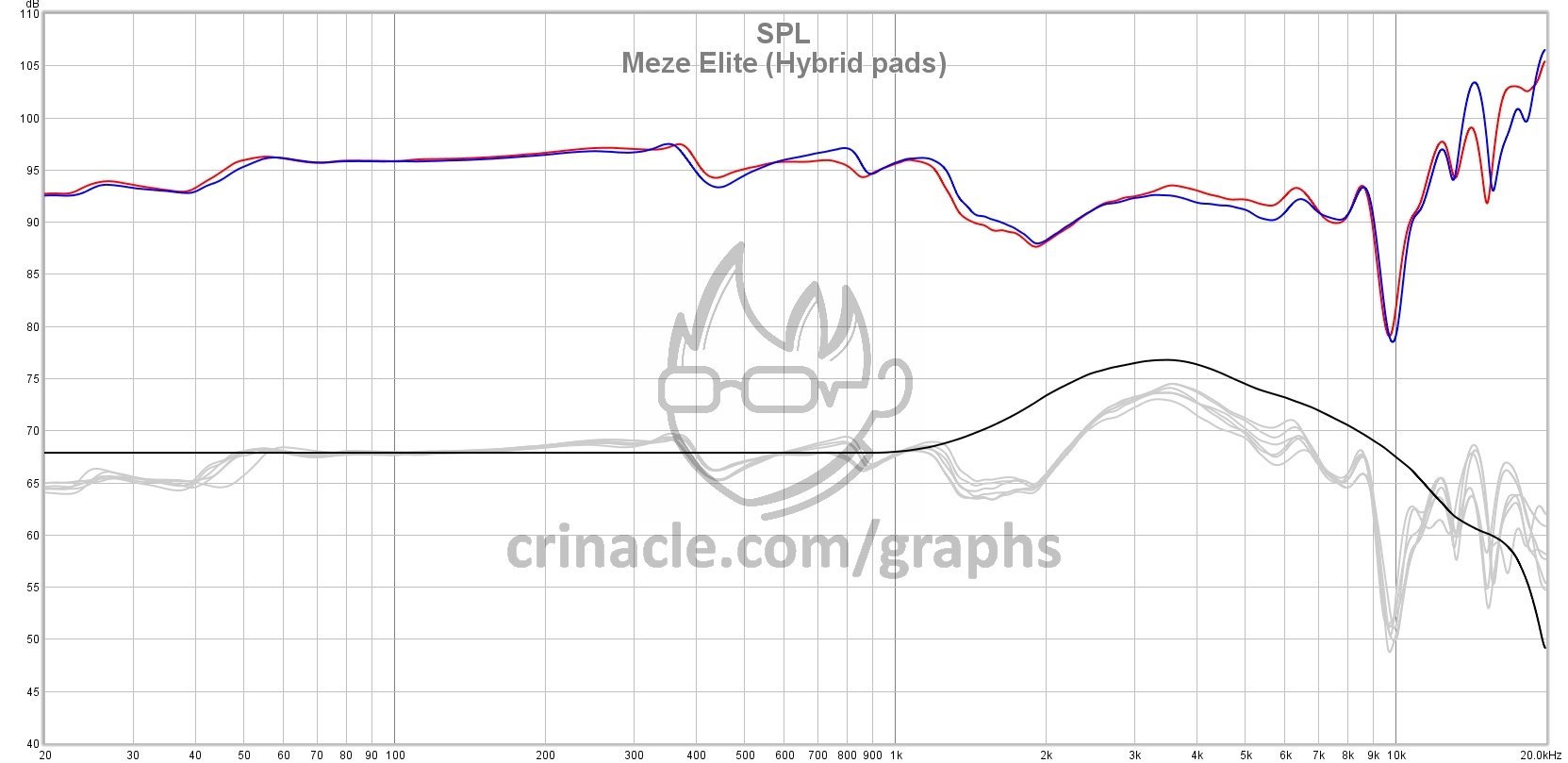Mr. Haelscheir
Active Member
- Joined
- Mar 16, 2023
- Messages
- 136
- Likes
- 102
As we know, headphones tend to incur frequency response nulls natural to our own ears. For example, below, you can see my in-ear, partially blocked canal entrance frequency response for the left driver of my Meze Elite, then the result from adding on the EQ from my personally measured HRTF as corresponds with a sound source of perfectly 90-degree incidence from the sagittal axis (the dotted phase response traces are inaccurate):


Here, it can be seen that the 6 kHz peak, 8.6 kHz null, and 14.1 kHz null are accentuated, suggesting that these features on the unEQed Meze Elite were consistent with my HRTF for sound sources of 90-degree incidence. I have measured these nulls as being similarly positioned on my other headphones. Angling the drivers by small amounts may only slightly alter the levels and positioning of these nulls.
For binaural head-tracking, the treble nulls would be constantly moving, whereby for true accuracy, you would have to first EQ up the headphones' default nulls (which is fortunately easy on my Meze Elite for which the nulls are fairly shallow and "round"). My ideal headphone for binaural head-tracking would be completely devoid of nulls in the treble, allowing the binaural renderer to apply your HRTF's nulls without other inaccurate nulls or inconsistent peaking filters present. Given this, what headphone design techniques are out there for eliminating these nulls? I'm thinking of damping, either increasing or decreasing reflections, else using differently angled drivers with calibrated phases.
Here, it can be seen that the 6 kHz peak, 8.6 kHz null, and 14.1 kHz null are accentuated, suggesting that these features on the unEQed Meze Elite were consistent with my HRTF for sound sources of 90-degree incidence. I have measured these nulls as being similarly positioned on my other headphones. Angling the drivers by small amounts may only slightly alter the levels and positioning of these nulls.
For binaural head-tracking, the treble nulls would be constantly moving, whereby for true accuracy, you would have to first EQ up the headphones' default nulls (which is fortunately easy on my Meze Elite for which the nulls are fairly shallow and "round"). My ideal headphone for binaural head-tracking would be completely devoid of nulls in the treble, allowing the binaural renderer to apply your HRTF's nulls without other inaccurate nulls or inconsistent peaking filters present. Given this, what headphone design techniques are out there for eliminating these nulls? I'm thinking of damping, either increasing or decreasing reflections, else using differently angled drivers with calibrated phases.



/Meze%20Elite%20(hybrid%20earpads).png?raw=true)